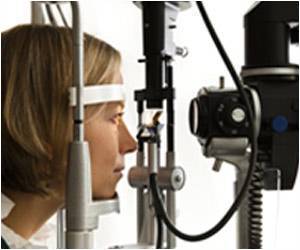The greatest burden of visual impairment will affect those above 80 years as old age is a key risk factor for diseases such as age-related macular degeneration.

‘Early detection and intervention-possibly as simple as prescribing corrective lenses-could go a long way toward preventing a significant proportion of avoidable vision loss.’





The researchers were led by Rohit Varma, M.D., director of the University of Southern California's Roski Eye Institute, Los Angeles, and published their analysis May 19th in JAMA Ophthalmology. They estimate that 1 million Americans were legally blind (20/200 vision or worse) in 2015. Having 20/200 vision means that for clear vision, you would have to be 20 feet or closer to an object that a person with normal vision could see from 200 feet away. Meanwhile, 3.2 million Americans had visual impairment in 2015-meaning they had 20/40 or worse vision with best possible correction. Another 8.2 million had vision problems due to uncorrected refractive error.
"These findings are an important forewarning of the magnitude of vision loss to come. They suggest that there is a huge opportunity for screening efforts to identify people with correctable vision problems and early signs of eye diseases. Early detection and intervention-possibly as simple as prescribing corrective lenses-could go a long way toward preventing a significant proportion of avoidable vision loss," said NEI Director Paul A. Sieving, M.D., Ph.D.
Over the next 35 years, Varma and his colleagues project that the number of people with legal blindness will increase by 21 percent each decade to 2 million by 2050. Likewise, best-corrected visual impairment will grow by 25 percent each decade, doubling to 6.95 million. The greatest burden of visual impairment and blindness will affect those 80 years or older as advanced age is a key risk factor for diseases such as age-related macular degeneration and cataract.
The researchers analyzed data on visual impairment and blindness from six large studies: the Beaver Dam Eye Study (Beaver Dam, Wisconsin), Baltimore Eye Survey and Salisbury Eye Evaluation Study (Maryland), the Chinese American Eye Study (Monterey Park, California), Los Angeles Latino Eye Study, and Proyecto VER (Nogales and Tucson, Arizona). They used the 2014 census and population growth projections to estimate the nationwide prevalence of vision impairment and blindness now and in 2050.
Advertisement
African Americans currently account for the second highest proportion of visual impairment, but that is expected to shift to Hispanics around 2040, as the Hispanic population-and particularly the number of older Hispanics-continues to grow. Hispanics have particularly high rates of diabetes, which is associated with diabetic eye disease, a treatable cause of visual impairment.
Advertisement
Source-Newswise









